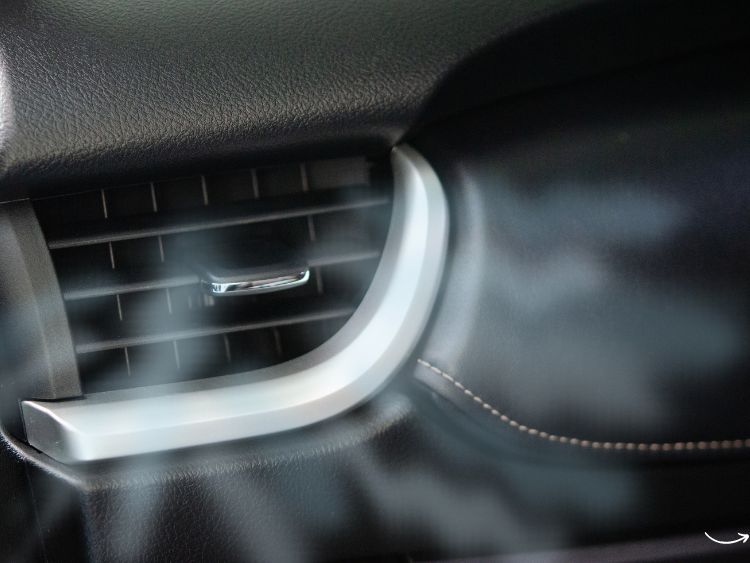Ever wondered how drivers kept cool in their classic rides before the advent of modern air conditioning systems? The journey of vintage car air conditioning is fascinating, filled with ingenuity and a sprinkle of nostalgia. Let’s dive into the world of old-school cool and explore how early motorists beat the heat in style.
The Birth of Car Air Conditioning
Early Attempts at Automotive Comfort
Before air conditioning became a staple in vehicles, early attempts at keeping cool were pretty rudimentary. Drivers would rely on open windows, vent wings, and hand-held fans. Some even used ice packs and wet towels. But as automobiles evolved, so did the desire for more sophisticated cooling methods.
The First Air Conditioned Car
In 1939, Packard became the first car manufacturer to offer air conditioning in its vehicles. This system was a game-changer, though it was bulky and expensive. The unit took up half the trunk space, and there was no temperature control – it was either on or off. Despite its limitations, it marked the beginning of a new era in automotive comfort.
Evolution of Vintage Car Air Conditioning
1950s: The Rise of Air Conditioning
By the 1950s, car air conditioning became more common, especially in luxury models. Cadillac, Chrysler, and Lincoln were among the brands that offered factory-installed systems. These systems were more efficient and user-friendly, featuring controls that allowed drivers to adjust the temperature.
1960s: Widespread Adoption
The 1960s saw a significant increase in the availability of air conditioning in cars. More affordable models started offering it as an optional feature. The technology improved, with smaller, more efficient units that didn’t compromise trunk space. This decade set the stage for air conditioning to become a standard feature in the years to come.
1970s and Beyond: Modern Innovations
By the 1970s, air conditioning was a common feature in most new cars. Innovations in refrigerants and compressor technology made systems more efficient and environmentally friendly. The development of climate control systems allowed for precise temperature regulation, enhancing the overall driving experience.
How Vintage Car Air Conditioning Works
Basic Components
Understanding how vintage car air conditioning works involves a few key components:
- Compressor: Pumps refrigerant through the system.
- Condenser: Converts refrigerant from gas to liquid.
- Evaporator: Absorbs heat and cools the air.
- Expansion Valve: Regulates the flow of refrigerant.
The Cooling Process
The process begins with the compressor, which pressurizes the refrigerant and sends it to the condenser. The condenser dissipates heat, turning the refrigerant into a liquid. This liquid passes through the expansion valve, where it becomes a low-pressure gas. Finally, the evaporator absorbs heat from the cabin air, cooling it before it’s circulated back into the car.
Maintaining Vintage Car Air Conditioning
Regular Inspections
Keeping your vintage car’s air conditioning system in top shape requires regular inspections. Check for leaks, ensure the refrigerant levels are adequate, and inspect the belts and hoses for signs of wear.
Refilling Refrigerant
Refrigerant levels can deplete over time, affecting the system’s efficiency. Refilling the refrigerant, preferably with R-134a or other modern alternatives, can restore cooling performance.
Cleaning the System
Dust and debris can clog the system, reducing its efficiency. Regularly clean the condenser and evaporator to maintain optimal airflow.
Common Issues with Vintage Car Air Conditioning
Leaks and Low Refrigerant
Leaks are a common issue in vintage car air conditioning systems. They can result in low refrigerant levels, leading to reduced cooling performance. Regularly check for leaks and top up the refrigerant as needed.
Faulty Compressors
The compressor is the heart of the air conditioning system. Over time, it can wear out or fail, resulting in poor cooling. Replacing a faulty compressor is essential for restoring the system’s functionality.
Electrical Problems
Vintage cars often face electrical issues that can affect the air conditioning system. Faulty wiring, blown fuses, and malfunctioning switches are common culprits. Ensure the electrical system is in good working order to avoid these problems.
The Charm of Vintage Car Air Conditioning
Nostalgia and Authenticity
There’s something undeniably charming about vintage car air conditioning systems. They remind us of a time when automotive technology was simpler yet innovative. Maintaining an original air conditioning system can add to the authenticity and value of a classic car.
Unique Features
Vintage air conditioning systems often have unique features that set them apart from modern systems. From quirky control knobs to retro vents, these systems add character to classic cars.
Restoring Vintage Car Air Conditioning
Finding Original Parts
Restoring a vintage car’s air conditioning system to its original glory can be challenging. Finding original parts, such as compressors, condensers, and evaporators, requires patience and dedication. Classic car clubs and online forums can be valuable resources for locating these parts.
Upgrading for Modern Performance
While authenticity is important, some classic car owners choose to upgrade their air conditioning systems for better performance. Modern compressors and refrigerants can enhance cooling efficiency without compromising the car’s vintage appeal.
Professional Restoration Services
For those who lack the expertise or time to restore their vintage car’s air conditioning system, professional restoration services are available. These specialists have the knowledge and experience to ensure the system is restored to its original condition or upgraded for improved performance.
FAQs about Vintage Car Air Conditioning
1. Can I install air conditioning in a vintage car that didn’t originally have it?
Yes, it’s possible to retrofit air conditioning into a vintage car. Many aftermarket kits are designed to fit older models, providing modern cooling comfort while maintaining the car’s classic look.
2. Is it expensive to maintain a vintage car’s air conditioning system?
Maintenance costs can vary depending on the condition of the system and the availability of parts. Regular inspections and preventive maintenance can help keep costs manageable.
3. What refrigerant should I use for my vintage car’s air conditioning system?
Many vintage car air conditioning systems originally used R-12 refrigerant, which is now banned due to environmental concerns. Modern alternatives like R-134a are commonly used as replacements.
4. Can I upgrade my vintage car’s air conditioning system for better performance?
Yes, upgrading components like the compressor and refrigerant can improve the performance of a vintage car’s air conditioning system. These upgrades can enhance cooling efficiency while maintaining the car’s vintage appeal.
5. Are there any special considerations for restoring a vintage car’s air conditioning system?
Restoring a vintage car’s air conditioning system requires careful attention to detail. Finding original parts, ensuring proper installation, and maintaining authenticity are key considerations.
Conclusion
Vintage car air conditioning is more than just a way to keep cool; it’s a testament to the ingenuity and craftsmanship of a bygone era. From the first air-conditioned Packard to the widespread adoption in the 1960s, the evolution of car air conditioning reflects the broader story of automotive innovation. Whether you’re a classic car enthusiast or simply curious about the history of automotive comfort, the journey of vintage car air conditioning offers a fascinating glimpse into the past. So next time you see a classic car cruising down the road, remember that its coolness isn’t just about its looks – it’s also about the cool air circulating inside.







